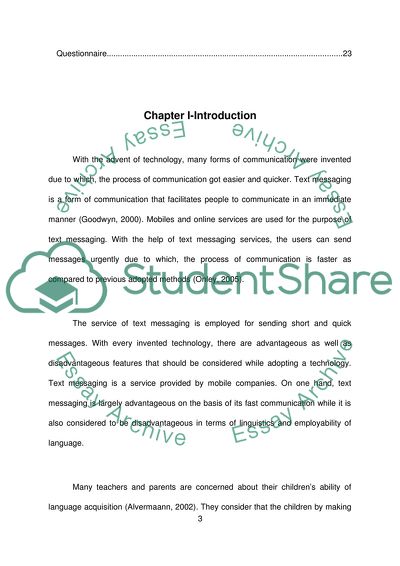Cite this document
(Text Messaging Helping or Hurting Childrens Writing Skills Research Proposal, n.d.)
Text Messaging Helping or Hurting Childrens Writing Skills Research Proposal. https://studentshare.org/education/1719980-text-messaging-helping-or-hurting-childrens-writing-skills
Text Messaging Helping or Hurting Childrens Writing Skills Research Proposal. https://studentshare.org/education/1719980-text-messaging-helping-or-hurting-childrens-writing-skills
(Text Messaging Helping or Hurting Childrens Writing Skills Research Proposal)
Text Messaging Helping or Hurting Childrens Writing Skills Research Proposal. https://studentshare.org/education/1719980-text-messaging-helping-or-hurting-childrens-writing-skills.
Text Messaging Helping or Hurting Childrens Writing Skills Research Proposal. https://studentshare.org/education/1719980-text-messaging-helping-or-hurting-childrens-writing-skills.
“Text Messaging Helping or Hurting Childrens Writing Skills Research Proposal”. https://studentshare.org/education/1719980-text-messaging-helping-or-hurting-childrens-writing-skills.


